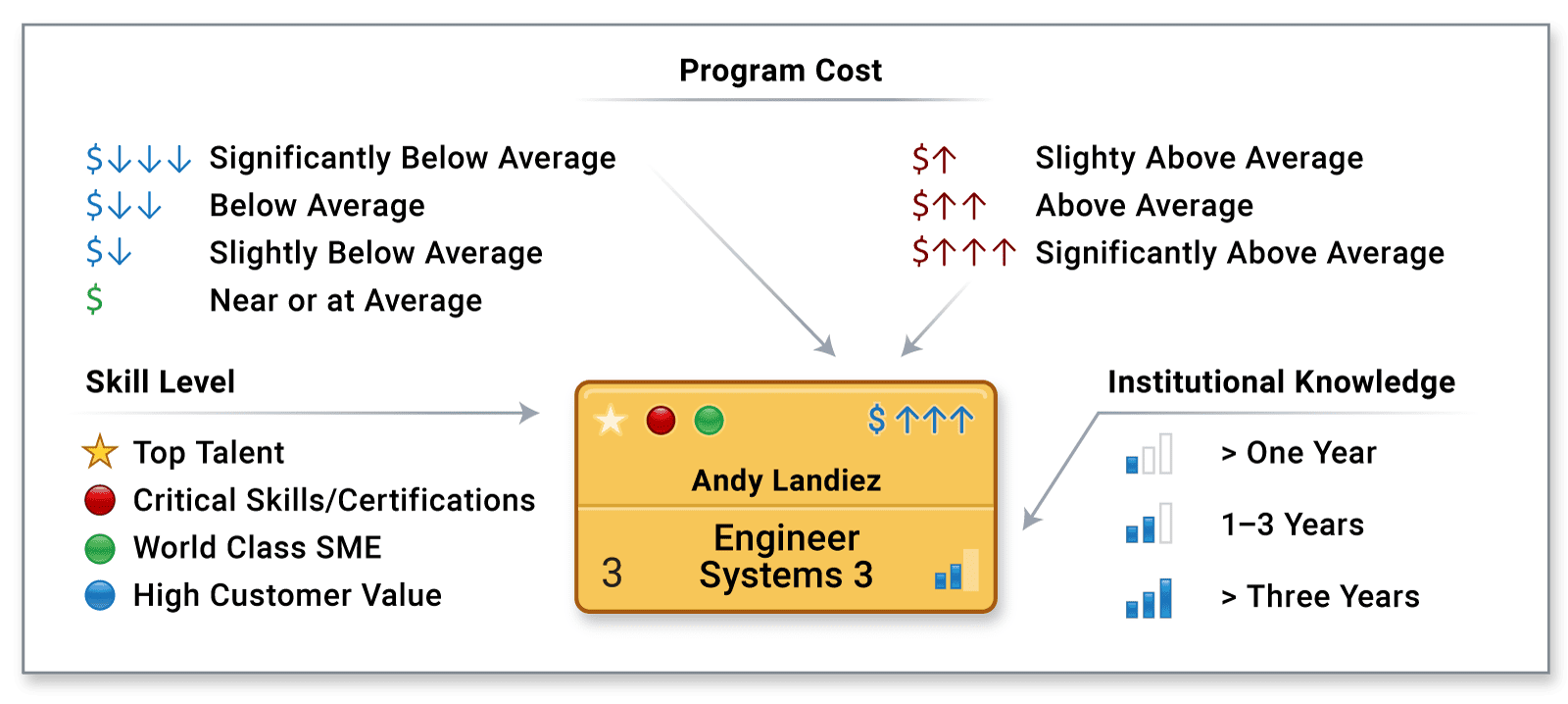April 21, 2025
2:29 PM

HR professionals face mounting pressure to improve efficiency, ensure compliance, and retain top talent, all while managing an increasingly complex workforce. It’s easy to get overwhelmed and spread yourself too thin while juggling these responsibilities. When searching for a solution, implementing workforce optimization software is the way to go.
Whether you’re managing a small on-site team or a large company with remote and hybrid employees, workforce optimization software is the key to unlocking your potential. These tools are vital in driving smarter decision-making and solving the most common HR roadblocks, like disorganized company hierarchies and inefficient time tracking.
Let’s dive into everything you need to know about workforce management solutions, from their top features and benefits to the main factors you need to consider before choosing your software.
At its core, workforce optimization is about reducing costs, simplifying processes, and improving employee efficiency in and out of the HR department. Workforce optimization software encompasses all of these goals and uses the power of data analytics to help HR teams solve issues and keep their companies running smoothly.
Think of workforce optimization software as the command center for your HR operations. It brings scheduling, analytics, and compliance into one platform, allowing you to make better staffing and management decisions faster. Plus, the software can automate routine tasks, saving you even more time and energy.
The software has a range of functions and features to seamlessly fit into HR teams’ existing processes. With the support of workforce optimization tools, you can streamline your workforce planning, elevate your talent acquisition process, improve your employee performance management, and more. Having all of these capabilities in one singular platform makes it easy for team members to coordinate with one another and prevents miscommunication along the way.
When working with a mid-to-large company, building fast, simplified processes that provide consistent results is paramount. With so many employees relying on HR for support, you can’t afford to waste time tracking down documents, tweaking processes, or working through obstacles!
To get the most out of your workforce optimization software, here are six of the most essential features you need to have in your toolbox.
Automation is the key to sidestepping overwhelm as an HR professional. Automated scheduling eliminates the need for manual scheduling, freeing up time for HR teams to focus on strategic workforce planning and improving company culture.
Once your company is set up inside your workforce optimization software, you can program your automated scheduling to include routine meetings, prevent double-bookings, and allot a certain amount of time between meetings. This gives employees consistency and balance, reducing their stress and increasing their contentment at the company.
One of the most important workforce optimization tools is analytics and performance tracking. This feature allows HR professionals to gain real-time insights into employee productivity, attendance trends, and labor costs throughout the entire organization.
For example, if the software shows that several employees on the same team are regularly working overtime, HR can raise a red flag and meet with their manager. Together, they’ll review everyone’s workload and determine if onboarding an additional employee could improve the team’s efficiency. Combining workforce optimization with a company hierarchy platform like OrgChart lets HR professionals quickly identify gaps and optimize team structures for long-term success.
According to Drata’s 2023 Compliance Trends Report, 35% of companies spend between 1,000 and 4,999 hours on compliance every year. Dedicating so much time to compliance forces HR teams to put routine tasks on the back burner, slowing down processes across the entire organization. HR professionals can reduce their compliance workload by utilizing a reliable and consistent workforce optimization platform.
With workforce management software, you can automatically track overtime limits, employee break requirements, and union rules for your industry. The software will notify you of any issues, ensuring your company remains compliant and avoids legal risks.
Adding yet another platform to your HR team’s plate can seem intimidating, but workforce optimization software is built to be used in tandem with other programs. Like OrgChart, many platforms have built-in HRIS and payroll integrations with major companies like ADP, Workday, and UKG.
These integrations sync with all of your other platforms to ensure payroll accuracy, provide real-time updates across programs, and eliminate manual data entry. The enhanced data visibility makes managing mid-to-large companies a breeze, especially for remote and hybrid teams.
A disorganized company structure leads to a confused and frantic HR team. Workforce optimization software consolidates HR data into a centralized system, providing a unified view of employee information, performance metrics, and talent profiles.
HR professionals can easily access, review, and update employment data when the company undergoes staffing changes or department shuffling. Plus, having centralized data management simplifies the hiring and resource allocation processes, ensuring all teams have the exact support they need.
Workforce optimization tools aren’t just about managing the workforce you have — they’re a vital part of identifying, developing, and retaining top talent in your industry. Your software will provide powerful insights regarding redundant roles, skill gaps, and expansion opportunities in every department.
The workforce optimization software’s advanced performance tracking allows you to pinpoint and nurture an employee’s skills. You’ll set them up for success as they advance through the company and build a stronger, more cohesive team.

For HR leaders in companies with 100+ employees, successfully implementing workforce optimization software requires careful planning. Though it can take time to get up and running with workforce optimization tools, the long-term benefits are more than worth the investment.
Here are just a few of the major improvements mid-to-large companies will experience once they begin utilizing workforce optimization software.
Selecting the best workforce optimization software is a critical decision for HR professionals. Choosing the wrong program leads to poor planning, continued efficiency issues, and increased team costs.
Every company has its priorities, but mid-to-large teams must consider the following six factors when picking their workforce management solution.
Is your HR team lacking visibility into departmental structures and reporting relationships? The right platform should provide real-time insights into your organization’s hierarchy, employee roles, and team responsibilities. With this information in your back pocket, you can support employees through inter-departmental issues and provide clarity around workloads when new hires join the company.
This is especially important when working with union-protected teams. Your workforce organization tools must clearly label an employee’s classification status to ensure they’re compliant with mandated break times, overtime hours, and other labor laws. OrgChart enhances this process by providing real-time visuals of workforce structures with extensive customization tools, allowing HR professionals to set their teams up for success.
Before implementing a new workforce optimization tool, ensure it can handle the intricacies of your company’s hierarchy. If you work with freelancers or contract employees, check for remote work support and temporary employee access. For teams with international divisions, review the software’s integrations to confirm all overseas platforms will work with the program.
Your chosen software should evolve with your company and adapt to workforce expansions, whether that’s new hires, out-of-state offices, or international partners. This enhances your team’s agility and allows for improved staffing and resource reporting.
A robust workforce solution must connect to your existing HR tech stack, including HRIS, payroll, and other productivity tools. Review all of the software’s additional integration capabilities to see which platforms could improve your team’s efficiency once implemented.
Having a seamless digital connection between platforms is a game-changer for HR teams. It removes the need for manual data entry, freeing up time for more important activities and reducing the risk of human error during staffing changes. Plus, maintaining a continuous flow of information between all platforms ensures all employees have access to real-time data regardless of which program they’re working on.
Implementing workforce optimization software is a great decision, but it’s worthless if the program is difficult to understand or frustrating to use. Choose a user-friendly platform that has an easy-to-follow structure and doesn’t require complex processes.
There will be a natural learning curve when working with a new program for the first time, but an intuitive platform minimizes training time for HR professionals, top management, team leads, and entry-level employees. Consider choosing a platform with a mobile app or a mobile-friendly website if your team is often on the go.
If your company works with third-party vendors, follows a franchise structure, or has multiple national or international offices, you must prioritize customer support when choosing your workforce tools. When you run into issues, having a dedicated support team by your side will help employees stay calm and quickly find a solution.
A robust customer service department comes with extensive training resources and onboarding assistance to set your company up for success. They’ll make sure you’re able to seamlessly implement the software and are aligned with all applicable labor laws and industry standards.
Instead of focusing only on pricing, consider how your chosen software provides a return on investment throughout your company. How will it reduce your administrative workload? Does the improved labor cost management outweigh the initial software cost? Are there any continued costs, like yearly renewal fees or paid upgrades, and does the investment make sense long-term? How will the enhanced compliance tracking save time and effort over time?
Workforce optimization software does more than just streamline and simplify your workplace. These tools aid in data-driven decision-making to eliminate redundancy, improve team efficiency, and reduce unnecessary labor costs and overtime expenses. Your chosen software may come with a large upfront cost, but it will pay for itself many times over throughout the year.
HR professionals need comprehensive support to keep up with the demands of managing mid-to-large companies, and workforce optimization tools are here to help. These digital solutions are equipped with powerful features that solve common HR roadblocks and prevent long-term issues.
Automated workforce management programs provide real-time updates on team hierarchies, reporting relationships, and employee union classifications, allowing you to easily manage distributed teams. The increased visibility leads to improved planning and reporting and eliminates inefficiencies and redundancies within the workplace.
Plus, workforce optimization software adapts to your team’s evolving needs and integrates with your existing HR platforms for ease of use! It’s your one-stop shop for everything HR teams need to lead their workforce with confidence and clarity.
Struggling with workforce visibility? See how OrgChart can transform your workforce planning in real-time. Book a demo today and take the first step toward a more agile and efficient HR strategy!